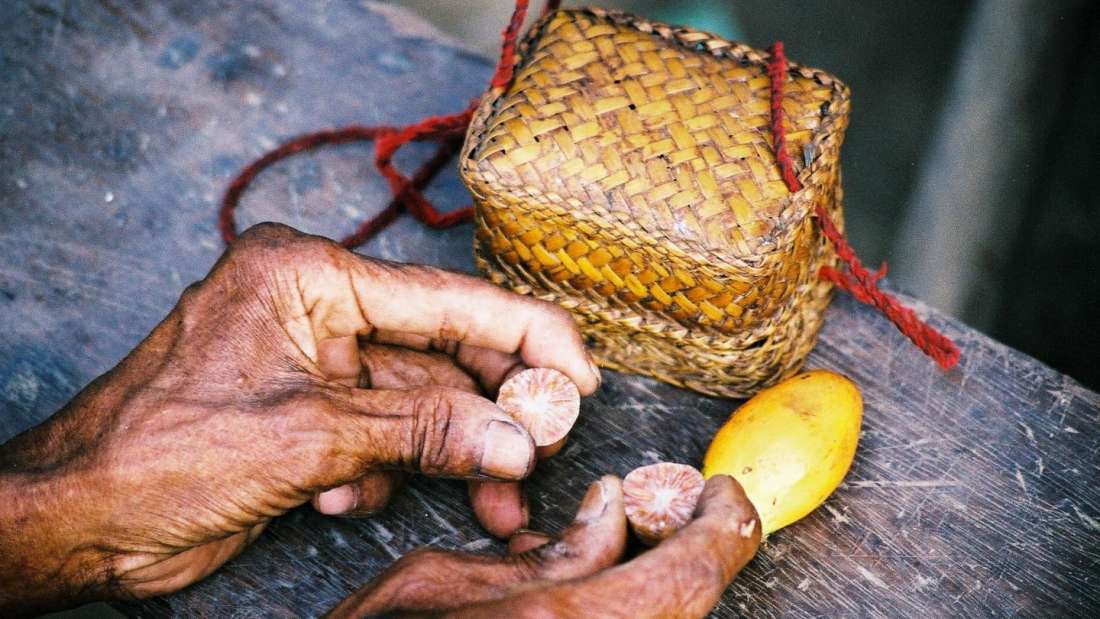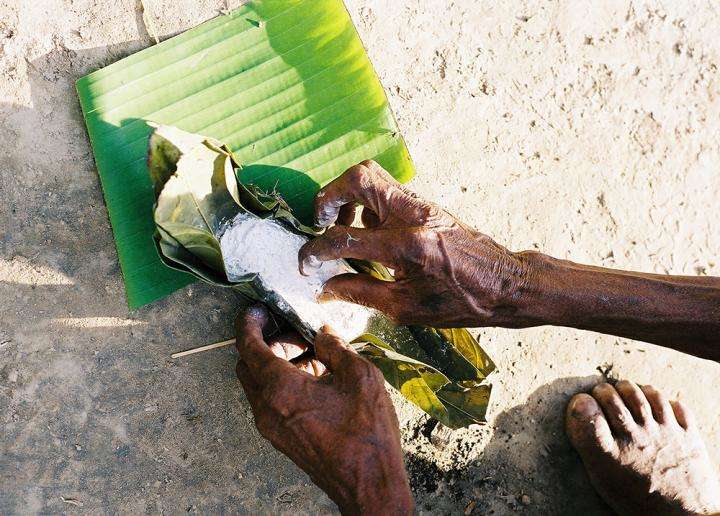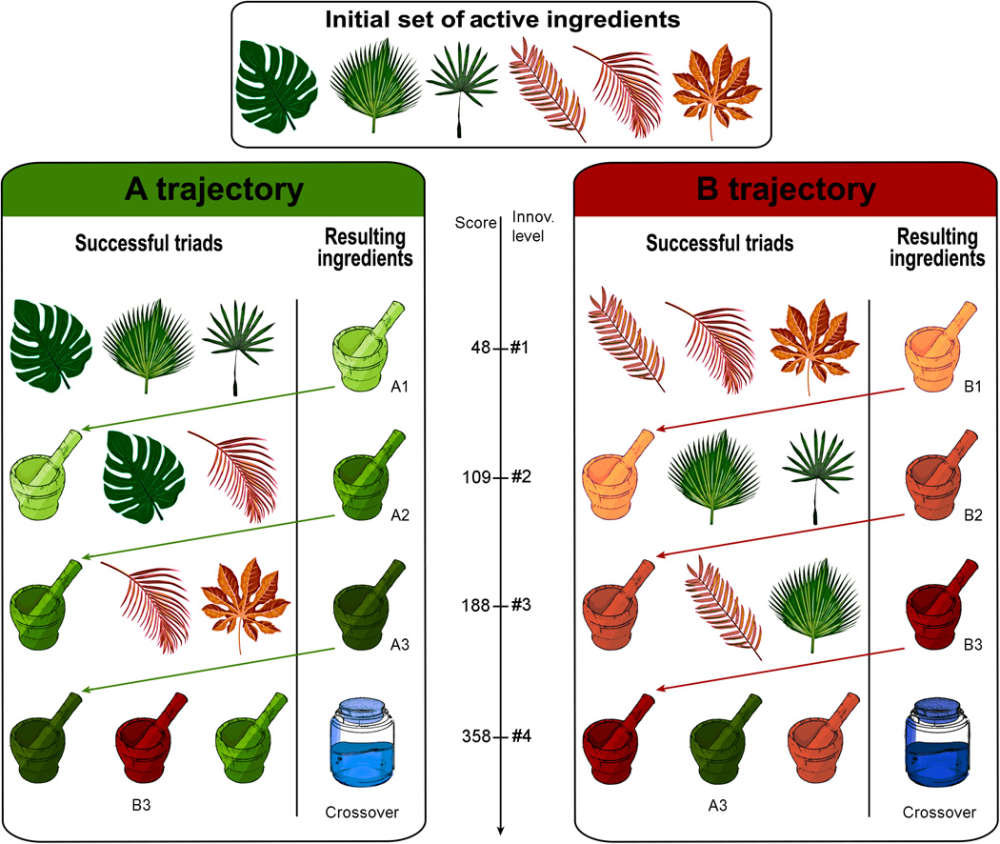研究人员追踪了一个遥远的狩猎采集部落,以确定古代人类是如何引发文化革命的
研究人员追踪了一个遥远的狩猎采集部落,以确定古代人类是如何引发文化革命的
Humans' ability to brainstorm solutions, share them with others, and improve upon them over time sets us apart from even our closest primate relatives. This has allowed us to develop complex learning systems and innovative tools to ensure humanity’s success since the Stone Age.
人类集思广益、与他人分享解决方案并随着时间的推移不断改进的能力,使我们与我们最亲近的灵长类亲戚有所不同。这使我们能够开发复杂的学习系统和创新的工具,以确保人类自石器时代以来的成功。

Madison Dapcevich
But just how ancient humans deployed and built upon existing information 300,000 years ago has long mystified scientists, which is why researchers from the University of Zurich and Central European University in Budapest set out to determine how social interactions between various groups of hunter-gatherers helped to spur advanced communication. To do so, the team turned to one of the few remaining hunter-gatherer societies left in the world: the Agta people in the Philippines.
但是,30万年前远古人类是如何利用和构建现有信息的,这一直困扰着科学家们,这就是为什么来自苏黎世大学和布达佩斯中欧大学的研究人员开始研究不同狩猎-采集群体之间的社会互动是如何促进高级交流的。为了做到这一点,研究小组转向了世界上仅存的几个狩猎采集社会之一:菲律宾的阿格塔人(Agta)。
The Agta people have a strong social structure built around small family units linked by friendship. Members of various family groups will often travel to neighboring campsites to exchange information and socialize. To see how ideas were spread, tracking devices were put on 53 individuals to record social interactions every hour over the course of one month. Study participants were then paired together and given six medicinal plants that they could use to treat various ailments. They were told to come up with different combinations and share their findings among their connections.
阿格塔人有一个强大的社会结构,围绕着由友谊联系起来的小型家庭单位。各种家庭团体的成员经常到邻近的露营地交换信息和社交。为了了解想法是如何传播的,研究人员让53名参与者在一个月内每小时记录一次社交互动。然后,研究参与者被分成两组,并被给予六种可以用来治疗各种疾病的药用植物。他们被要求想出不同的组合,并在他们的联系中分享他们的发现。

The researchers simulated the complex cultural creation of a plant-based medicinal product. UZH
Over the course of the study, the tracking devices documented thousands of interactions both between people of their own camp as well as daily visits to outside camps. Researchers then developed a computer model based on the recorded interactions and simulated what it would look like if a fictitious plant-based medicinal product was created. This coexistence of ideas allowed for a variety of perspectives to offer different medicinal solutions to similar health-related problems; people share knowledge with every encounter, eventually leading to improved remedies over time.
在研究过程中,这些追踪设备记录了数千次他们自己营地的人们之间的互动,以及他们每天去外面营地的情况。然后,研究人员根据记录的相互作用开发了一个计算机模型,并模拟了如果虚构的基于植物的药物产品被创造出来会是什么样子。这种共存的想法允许从不同的角度为类似的健康相关问题提供不同的医疗解决方案;人们在每次遭遇时都会分享知识,最终会改善治疗方法。
"It is fair to say that 'visits between camps' is the social media of current hunter-gatherers," said study author Andrea Migliano, professor of anthropology at UZH, in a statement. “When we need a new solution for a problem, we go online and use multiple sources to obtain information from a variety of people. Hunter-gatherers use their social network in exactly the same way."
研究报告的作者、乌兹大学的人类学教授安德里亚·米格里亚诺在一份声明中说:“公平地说,‘营地之间的探访’是当前狩猎-采集者的社交媒体。”“当我们需要一个新的解决方案时,我们会上网,利用多种渠道从各种各样的人那里获取信息。狩猎者和采集者使用社交网络的方式完全相同。”
Researchers then created a secondary artificial network that simulated conditions where everyone is connected and information is immediately transmitted, much like the internet. They found that transferring information this way took longer for adaptations to occur because in-person collaboration does not happen simultaneously across different groups.
然后,研究人员创建了一个二级人工网络,模拟每个人都被连接起来并立即传输信息的条件,就像互联网一样。他们发现,以这种方式传递信息需要更长的时间来适应,因为人与人之间的合作不会在不同的群体之间同时发生。
"Our findings indicate that this social structure of small and interconnected bands may have facilitated the sequence of cultural and technological revolutions that characterizes our species as we expanded within and then out of Africa," said author Lucio Vinicius, from UZH's Department of Anthropology.
“我们的发现表明,当我们在非洲内外扩张时,这种小而相互联系的群体的社会结构可能促进了我们这个物种特有的文化和技术革命的进程,”来自UZH人类学部门的作者Lucio Vinicius说。

Study participants were given an initial set of six medicinal plants, which could be combined in triads to generate new drugs. Science Advances
The findings, published in Science Advances, build on previous work that found fluid social structures characterized cultural exchanges in Homo sapiens as long as 320,000 years ago, a connection that may have “facilitated the sequence of cultural and technological revolutions that characterizes our species."
发表在《科学进展》杂志上的这一发现,是建立在此前的研究基础上的。此前的研究发现,早在32万年前,智人的文化交流就以可变的社会结构为特征,这种联系可能“促进了构成我们这个物种特征的文化和技术革命的顺序”。
"Humans have a unique capacity to create and accumulate culture. From a simple pencil to the International Space Station, human culture is a product of multiple minds over many generations, and cannot be recreated from scratch by one single individual,” said study co-author Dr Mark Dyble.
“人类具有创造和积累文化的独特能力。从一支简单的铅笔到国际空间站,人类文化是几代人多思想的产物,不可能由一个人从头再创造出来。”


















